
0..5/+%#4+0/30(4*'330%+#4+0/(02/(02.#4+0/834'.30..5/+%#4+0/30(4*'330%+#4+0/(02/(02.#4+0/834'.3
"0-5.' #1'2
*'0-'0(2)#/+9#4+0/#-42#4')8+/4*'!3'2%'/4'2'&'3+)/ *'0-'0(2)#/+9#4+0/#-42#4')8+/4*'!3'2%'/4'2'&'3+)/
0(0$+-'11-+%#4+0/30(0$+-'11-+%#4+0/3
8#-3*'4
;$0,#&'.+!/+6'23+48
''3*'4#$0:
#2,&''56'2
'-(4!/+6'23+480( '%*/0-0)8
#228057.#/
'-(4!/+6'23+480( '%*/0-0)8
0--074*+3#/&#&&+4+0/#-702,3#4*4413#+3'-#+3/'402)%#+3
'%0..'/&'&+4#4+0/'%0..'/&'&+4#4+0/
3*'4&''56'2057.#/ *'0-'0(2)#/+9#4+0/#-42#4')8+/4*'!3'2%'/4'2'&
'3+)/0(0$+-'11-+%#4+0/30..5/+%#4+0/30(4*'330%+#4+0/(02/(02.#4+0/834'.31111
*4413&0+02)
*+3.#4'2+#-+3$205)*440805$84*'052/#-3#4-'%420/+%+$2#28'4*#3$''/#%%'14'&(02
+/%-53+0/+/0..5/+%#4+0/30(4*'330%+#4+0/(02/(02.#4+0/834'.3$8#/#54*02+9'&#&.+/+342#4020(
-'%420/+%+$2#28'02.02'+/(02.#4+0/1-'#3'%0/4#%4'-+$2#28#+3/'402)

C
ommunications of the
A
I
S
ssociation for nformation
ystems
Research Paper ISSN: 1529-3181
Volume 40 Paper 14 pp. 315 – 331 April 2017
The Role of Organizational Strategy in the User-
centered Design of Mobile Applications
Eyal Eshet
Turku Centre for Computer Science (TUCS)
Faculty of Social Sciences, Business and Economics, Åbo Akademi University, Finland
Mark de Reuver
Faculty of Technology, Policy and Management, Delft
University of Technology, The Netherlands
Harry Bouwman
Faculty of Technology, Policy and Management, Delft
University of Technology, The Netherlands
Abstract:
Gathering insights on users and the contexts they use mobile applications is at the core of the user-centered design
(UCD). Organizations find it strategically important to efficiently and effectively use these insights. With the
proliferation of mobile applications, gaining timely and relevant insights is increasingly challenging due to the
heterogeneous and dynamic context of use, the abundant availability of information on use behavior and the intense
time constraints imposed by the highly competitive mobile market. This paper develops a research model that
considers strategy foci as motivators that affect the efficient and effective use of insights on users and context in
design practices. We examine the mediating effects of UCD resources, such as time and financial constraints,
organizational practices, and UCD competence. To test the model, we conducted a survey with 100 mobile
practitioners and used PLS to estimate the model. The model shows that focus on an innovation strategy both directly
and indirectly affected data use on user and their context (i.e., mediated by organizational practices and UCD
competence) in design practices. Strategies with a focus on cost had no direct effect on the use of user insights but
led to negative impacts on UCD competence and organizational practices.
Keywords: IS Development, Organizational Strategy, Mobile Applications, Interaction Design, Survey.
This manuscript underwent editorial review. It was received 02/02/2016 and was with the authors for 7 months for 1 revision. Anders
Hjalmarsson served as Associate Editor.

316 The Role of Organizational Strategy in the User-centered Design of Mobile Applications
Volume 40 Paper 14
1 Introduction
User-centered design (UCD) is a well-established approach to designing and developing usable and
useful interactive systems. According to the approach, insights on users and their use contexts largely
inform how one should design interactive systems. Gaining these insights is strategically important to
organizations, which one can see in research in various disciplines such as management information
systems (MIS) (Robey & Markus, 1984), strategic management (Boland, 1978), software engineering
(Schmidt, Lyytinen, & Mark Keil, 2001), human-computer interaction (Gould & Lewis, 1985), the emerging
disciplines of user experience (UX) design (Hassenzahl & Tractinsky, 2006) and interaction design
(Sharp, Rogers, & Preece, 2007), and international standards (ISO, 2010). Commonly, organizations use
an idiosyncratic approach to collect and analyze user data. Regardless of the approach, organizations
need to efficiently and effectively use this data (the dependent variable in our research) in their projects.
As such, the way organizational strategies are implemented in working and, therefore, also in design
practices have an impact on the use of data in design practices. Understanding the influence of different
strategies and work procedures on the UCD practice is relevant to IS design management.
The new mobile era, labeled the “mobile apps era” (Eshet & Bouwman, 2015), introduces challenges to
the UCD practice of mobile interactive systems (i.e., mobile applications), specifically regarding designers’
effort to gain relevant insights on users and their use contexts. In contrast to the typically single use
context in stationary computing (e.g., desktop and Web applications), mobile computing devices such as
smartphones feature multiple use contexts (Henfridsson & Lindgren, 2005). In addition, the affordability of
mobile devices leads to more diverse users and new classes for situated activities that mobile computing
makes possible (Johnson, 1998). Consequently, users’ diversity and their variety of use contexts strain
efforts to effectively collect and analyze relevant user data. Secondly, rapid technological developments in
recent years (e.g., in embedded sensors and wireless technology) allow one to collect and analyze actual
use behavior data in real time. In particular, “big data” has led to a continuous flow of data about users’
behaviors, which insights from a growing number of market research companies has further fueled. With
the excess availability of use data, the efficient use of insights the data provide (i.e., understanding the
relevant from the ordinary) becomes more difficult. Lastly, application stores such as those that Apple and
Google provide have democratized the development and distribution of mobile applications, which has
resulted in an increasingly competitive and dynamic mobile market (Bergvall-Kåreborn & Howcroft, 2011).
Moreover, developers have increasingly begun to adopt agile approaches to design and develop mobile
applications (Eshet & Bouwman, 2015), though the agile principle on short system-delivery cycles limits
the time one has to understand users (Seffah, Desmarais, & Metzker, 2005). Given the competitive
pressures and resource constraints for UCD practice, effectively and efficiently using user and context
data becomes more strategically important.
To our knowledge, research has not examined organizational strategy and its relation to a specific aspect
in the UCD practice of mobile applications; that is, efficiently and effectively using data on users and their
use contexts. The new mobile era introduces challenges beyond “bring-your-own-device” (BYOD) or
channel strategies, affecting a company into its capillaries. We need to understand how an outside-in
perspective on organizational strategies (De Wit & Meyer, 2010) combines with an inside-out strategies
focused on providing resources and building competence in order to support the UCD practice. From an
outside-in perspective, views on cost-focused strategies vis-à-vis strategies focused on innovation are
relevant to consider (Christensen, 1997; Porter, 1985; Tidd, Bessant, & Pavitt, 2005). From an inside-out
perspective, the availability of UCD resources and capabilities, as extensively discussed in strategic
management and IS literature, needs attention (Barney, 1991; Mata, Fuerst, & Barney, 1995; Wernerfelt,
1984). Research on the relation between IS and resources and capabilities are rather high level and focus
in a generic way on IT assets, IT processes, or IS capabilities (Wade & Hulland, 2004) rather than on
specific practices. IS research has paid extensive attention to “design science” (Cross, 2001; Hevner,
March, Park, & Ram, 2004; Peffers, Tuunanen, Rothernberger, & Chatterjee, 2007; Sein, Henfridsson,
Purao, Rossi, & Lindgren, 2011), though we have yet to see IS research on organizational strategy’s
effect on the UCD practice. Research in human-computer interaction (HCI) emphasizes the relation
between the UCD practice and UCD resources/competence; it also emphasizes management-level
support (e.g., Rosenbaum, Rohn, & Humburg, 2000; Venturi, Troost, & Jokela, 2006), though it has yet to
establish a relation between organizational strategy and the UCD practice. With the increasing dominance
of mobile-based applications and big data’s emergence, attention to the UCD practice is important.
As such, in this study, we examine the impact of organizations’ strategies on the UCD practice. Given the
abundant available data on users and their use contexts, we focus on how innovation- and cost-focused
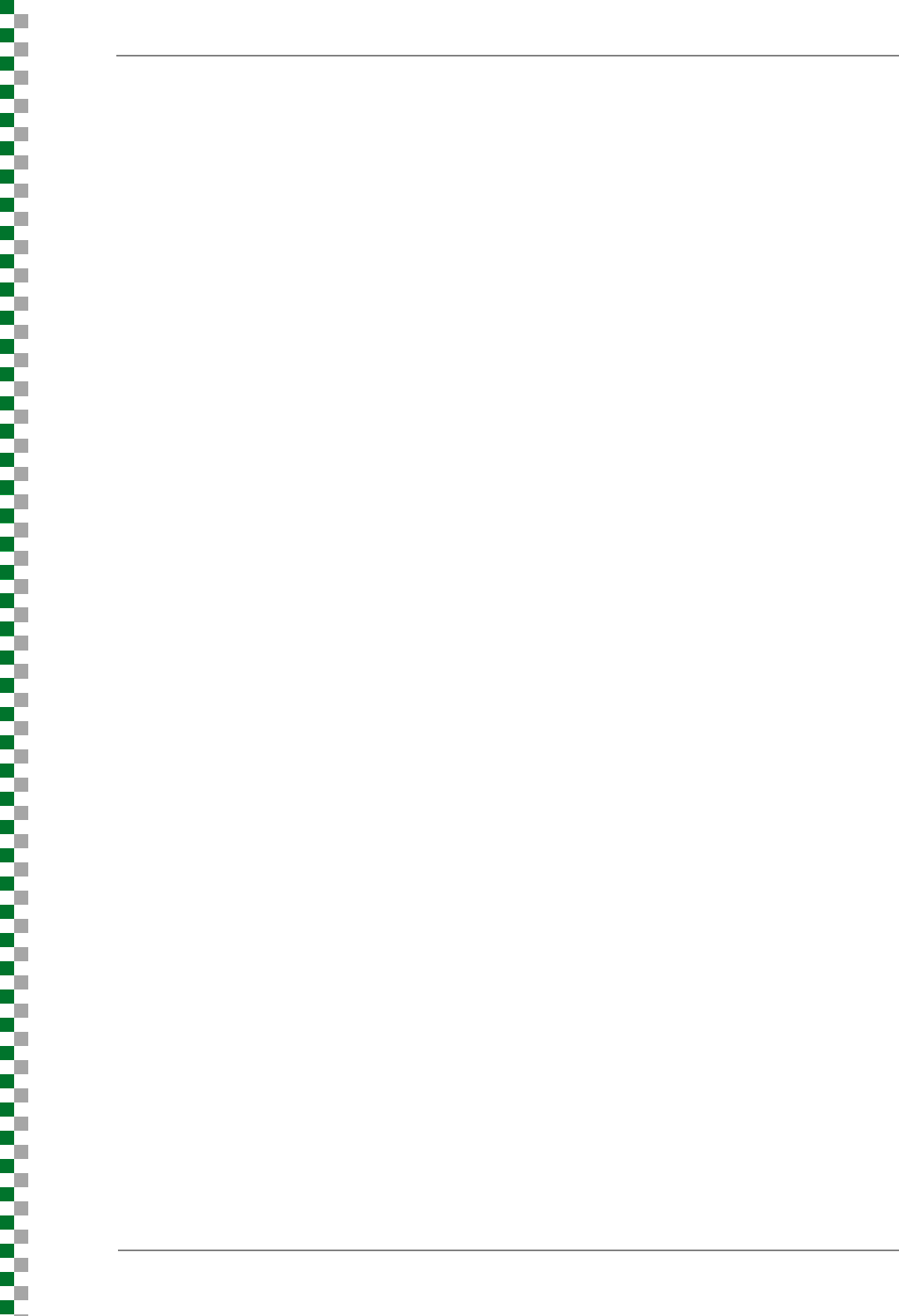
Communications of the Association for Information Systems 317
Volume 40 Paper 14
strategies affect a specific aspect of the UCD practice (i.e., using data about users and their use contexts
efficiently and effectively to design and develop mobile applications). Moreover, following HCI-based
views on the UCD practice, we examine the relation between organizations’ strategies and the UCD
practice using UCD resources and competence and organizational practices as mediating effects. As
such, this paper contributes to how time and financial constraints, UCD capabilities, and organizational
practices mediate the relationship between organizational strategy and how effectively and efficiently
organizations use data about users and their use contexts. We also contribute to strategic management
literature and to “design science” approaches in IS by connecting a strategy focus with the UCD practice
of mobile applications. As far as we are aware, no quantitative research that focuses on this relation
exists.
We surveyed user experience (UX) designers and interaction designers, software developers, project
managers, and project owners who are active in the design and development of mobile applications to
collect their perceptions and views. The study was carried out when the use of mobile applications
became a common practice in work and non-work activities of people in many western countries.
Research relating organizational strategic aspects to the UCD practice is limited and important for
managers to see what implications their strategic decisions have on the way mobile applications are
designed and to what degree design practices take insights based on use data and on context of use into
account. By doing so we also relate IS research with a focus on strategy to research on the UCD practice
in HCI.
This paper proceeds as follows. In Section 2, we define the core concepts of the paper and develop
hypotheses based on relevant literature. We also provide a research model. In Section 3, we explain the
overall research methodology. In Section 4, we present the study results and, in Section 5, discuss the
results. Finally, in Section 6, we discuss the study’s limitations, suggest future research directions, and
conclude the paper.
2 Core Concepts and Hypotheses Development
2.1 Core Concepts
2.1.1 UCD Practice
UCD is a formalized and standardized approach (ISO, 2010) to the designing and developing usable and
useful interactive systems. According to the approach, to develop usable and useful interactive systems,
one needs focus on users and their use contexts throughout the design and development process.
Practically, this focus is operationalized through UCD activities, such as interviews, observation, usability
tests, and market research (Sharp et al., 2007). Hence, UCD practice refers to the set of activities that
help one gain insights on users, their use contexts, and their use behaviors when designing and
developing interactive systems. Individuals involved in UCD practice use many different job titles, such as
interaction designer, user experience (UX) designer, usability engineer, and user researcher (Sharp et al.
2007).
2.1.2 Mobile Application
We consider mobile applications here from a sociotechnical perspective. Socially, mobility is an attribute
of humans rather than applications; as such, we roughly define it as people’s ability to move between
locations that vary spatially, temporally, and socially (Henfridsson & Lindgren, 2005). People carry their
computing devices with them while moving and use the devices in varied multi-contextual settings.
Accordingly, we consider mobile devices here as devices that people carry with them (Dix et al., 2000),
such as smartphones and tablet computers. We define the software programs that run on these mobile
devices as mobile applications. Technically, a mobile application can take the form of a native platform
application (i.e., mobile app), Web-based solution (i.e., HTML5), or any hybrid solution.
2.1.3 Organizational Strategy
Porter (1985) describes strategy in terms of the activities an organization chooses to perform (either
different activities from rivals or similar activities in different ways) in order to withstand competition in the
long run. These activities do not merely support the organization in dealing with the external competition
but essentially guide its and its employees’ internal operations, actions, and behaviors (Mintzberg, 1987).

318 The Role of Organizational Strategy in the User-centered Design of Mobile Applications
Volume 40 Paper 14
In this study, we limit the scope of strategies to two distinct approaches: cost-leadership strategy and
innovation-focused strategy.
2.1.4 Organizational Work Practices
Apart from a strategy, organizations have internal cultures with distinct characteristics that have an impact
on daily work practices, including on the UCD practice (Iivari, 2006). In this study, we consider
organizational culture in terms of established work practices that contribute to creativity, open
collaboration, and the sharing of ideas in the work environment.
2.1.5 UCD Competence
One can describe competence as the qualifications that make someone fit to perform a particular activity
(Ritter & Gemünden, 2004)—in this case, activities that relate to the UCD practice. Hence, UCD
competence refers to the capabilities and experience that practitioners need to deal with the UCD
practice.
2.1.6 UCD Resources
Resources denote everything that an organization controls, such as assets, capabilities, organizational
processes, knowledge, and information, which enable the organization to cost-effectively implement its
strategies (Barney, 1991). In this study, we limit UCD resources to the financial and time resources that
organizations allocate to the UCD practice.
2.1.7 Efficiently and Effectively Using Data on Users and Their Use Contexts
Data on users and their use contexts refers to the insights gained through the UCD practice. In this study,
we use the dependent variable efficient and effective use of this data (e.g., the extent to which the data
provide understanding on users’ use contexts in UCD practice with maximum productivity and minimal
wasted efforts (efficiency) and produce the desired result (effectiveness)).
2.2 Hypotheses Development
2.2.1 Cost-leadership Strategy
One can conceptualize organizational strategy from two perspectives: outside-in and inside-out (De Wit &
Meyer, 2010). Porter’s (1985) approach on strategic positioning is one approach typical for outside-in
views. Porter emphasizes two core types of competitive advantage: cost and differentiation. In
combination with the scope of activities, three strategies are considered: cost leadership, differentiation, or
focus. Treacy and Wiersema (1993) refines Porter’s ideas by focusing on operational excellence, product
leadership, and customer intimacy. In practice, a focus on cost and operational excellence leads to cost
awareness and optimization to reduce costs. Hereafter, we label this strategy “cost-leadership”.
The cost-leadership strategy implies that cost awareness is also key for UCD practice and, hence, that it
affects how an organization collect and uses data about users’ behavior and use contexts. A cost-
leadership strategy would favor using existing secondary data and low-cost alternatives, such as freely
available Internet reports on mobile use, to gain insight on users’ behavior and use contexts. Since no
established theoretical insights on the relation between strategy and the UCD practice exist, we anticipate
that a cost–leadership strategy directly and positively impacts organizations’ ability to efficiently and
effectively use data about users’ and their use contexts in design practices.
Hypothesis 1: Cost-leadership strategy increases efficiency and effectiveness of using data on
users and context of use in design practices
In response to outside-in models, Barney (1991) developed the resource-based view on strategy, by
focusing on how rare resources and capabilities give firms a competitive advantage. Resources and
capabilities that are rare, are hard to imitate, and have limited alternatives reinforce a company’s strategy.
Hence, resources and capabilities play an important role in how firms deal with the critical contingencies
that they face. The competence and experience of UCD practitioners may be part of these critical
resources and capabilities.
In the IS literature, much research has examined resources and capabilities though on a high-level. In this
study, we focus on resource and capabilities that are specifically relevant for the UCD practice. Insights on

Communications of the Association for Information Systems 319
Volume 40 Paper 14
the work of practitioners who deal with the UCD practice show that many resource constraints affect their
work; these constraints include time and money (Monahan, Lahteenmaki, McDonald, & Cockton, 2008;
Rosenbaum et al., 2000; Vredenburg, Mao, Smith, & Carey, 2002), the limited integration of design
practice techniques within an organization (Bygstad, Ghinea, & Brevik, 2008; Gulliksen, Boivie, &
Göransson, 2006), organizational culture (Iivari, 2006), organizational work practices in terms of internal
communication (Rosenbaum et al., 2000; Venturi et al., 2006), and management support (Gulliksen et al.,
2006; Rosenbaum et al., 2000; Venturi et al., 2006). In addition, designers’ competence (skills and
expertise) is an important element to consider (Hertzum & Jacobsen, 2001; Gulliksen et al., 2006; Suwa &
Tversky, 2001).
In this study, we consider the concepts of organizational work practices, UCD competence, and UCD
resources. We propose that they mediate the relation between organizational strategies and how
effectively and efficiently designers uses data on users and their use. Stimulating creative- and
collaboration-focused work practices requires significant time and budget resources and particular skills.
Existing HCI studies mainly highlight the challenges in promoting and implementing UCD activities in
organizations (Gulliksen, Boivie, Persson, Hektor, & Herulf, 2004; Rosenbaum et al., 2000; Venturi et al.,
2006) and provide guidelines for dealing with the institutionalization of the UCD practice (Mayhew, 1999;
Schaffer, 2004). As such, since we could find no existing literature in this area, we formulate our
hypotheses based on generic insights from innovation literature relating to business strategy.
With regard to organizational work practices, we anticipate that a cost-leadership strategy will more highly
regulate organizational work practices, which will leave less room for creativity, open collaboration, and
the sharing of ideas.
Hypothesis 1a: Cost-leadership strategy decreases organizational work practices committed to
UCD.
Similarly, we anticipate that cost-leadership strategy will have a negative effect on UCD resources and
UCD competence.
Hypothesis 1b: Cost-leadership strategy decreases resources committed to UCD.
Hypothesis 1c: Cost-leadership strategy decreases UCD competence
2.2.2 Innovation-focused Strategy
Similarly to Porter’s (1985) differentiation strategy and Treacy and Wiersema’s (1993) product leadership
view, emerging and transformational strategies (Mintzberg, Ahlstrand, & Lampel, 2009) that focus on the
impact of disruptive or incremental innovation (Christensen, 1997; Tidd et al., 2005) adopt an outside-in
approach. These strategic approaches all similarly dictate how companies and organizations should
respond to changes in their external environment, such as technology innovation or changes in consumer
demand or competitor behavior. We label these approaches “innovation-focused” strategies in this paper.
The changes in consumer demand and behavior with regard to mobile applications, may affect an
organization and require a response from top-management (e.g., offering new products and services).
In innovation-focused strategy, using UCD activities requires engaging users in depth, such as by
conducting contextual interviews, observing users, conducting focus groups, and analyzing data about
users collected via device-embedded sensors. In principle, these activities require much time and many
resources and are, therefore, less effective and efficient. Therefore, we anticipate that innovation-focused
strategy will have a direct and negative impact on the efficient and effective use of data on users and
context of use:
Hypothesis 2: Innovation-focused strategy decreases efficiency and effectiveness of using data on
users and context of use.
With regard to the mediating concepts of organizational work practices, UCD competence, and UCD
resources, we anticipate that an innovation-focused strategy will leave more room for creativity, open
collaboration, and the sharing of ideas and have a positive impact on the availability of UCD resources
and UCD competence.
Hypothesis 2a: Innovation-focused strategy increases organizational work practices committed to
UCD
Hypothesis 2b: Innovation-focused strategy increases resources committed to UCD

320 The Role of Organizational Strategy in the User-centered Design of Mobile Applications
Volume 40 Paper 14
Hypothesis 2c: Innovation-focused strategy increases UCD competence
2.2.3 UCD Resources
Applying UCD activities to gain understanding on users and their use contexts depends on the availability
of financial and time resources. Several studies have observed that budget and time constraints have a
significant influence on the UCD practice (e.g., Monahan et al., 2008; Rosenbaum et al., 2000;
Vredenburg et al., 2002). These resources may have a determinant role on the approach that practitioners
take during the UCD practice, such as how much effort, if any, they put into undertaking user and context
studies and how evaluation of design artefacts is carried out. Thus, we anticipate that the availability of
UCD resources will have a direct and positive impact on the efficient and effective use of data on users
and context of use in UCD practices.
Hypothesis 3: The amount of resources committed to UCD increases efficiency and effectiveness
of using data on users and context of use.
On a more general level, one can assume that UCD resources also impact UCD competence and
organizational work practices. Having a higher budget and more time also implies that one will have more
opportunities to develop one’s UCD competence, to pay attention to new ideas and feedback, and to work
in teams. Therefore, we anticipate that UCD resources will have a mediating roles between strategy
orientations (cost leadership or innovation focus) and (1) organizational work practices and (2) UCD
competences.
Hypothesis 3a: The amount of resources committed to UCD increases organizational work
practices committed to UCD.
Hypothesis 3b: The amount of resources committed to UCD increases UCD competence.
2.2.4 Organizational Work Practices
Prior studies have observed that internal communications in an organization (Rosenbaum et al., 2000;
Venturi et al., 2006), management support (Gulliksen et al., 2004; Rosenbaum et al., 2000; Venturi et al.,
2006), and the involvement of cross-functional teams (Rosenbaum et al., 2000) are key success factors
for the UCD practice in organizations. For instance, examining the role of organizations in facilitating user
involvement, Iiavri (2006) observed that organizational culture influenced UCD practice. Hence, we
anticipate that organizational work will have a direct and positive impact on practices on the efficient and
effective use of data on users and context of use in UCD practices.
Hypothesis 4: The amount of organizational work practices committed to UCD increases efficiency
and effectiveness of using data on users and context of use
2.2.5 UCD Competence
Lastly, we also consider UCD practitioners’ competence. Prior studies have observed that the knowledge
and experience of UCD practitioners largely affect the outcome of usability evaluations (Hertzum &
Jacobsen, 2001) and affect the approach and implementation of the UCD practice as well (Gulliksen et al.,
2006). Suwa and Tversky (2001) observed the superiority of experienced designers over novices in
generating new ideas from external representations, such as sketches. However, merely having
competence is not enough; one needs to efficiently and effectively use the competence in a way that
generates value to the organization (Ritter & Gemünden, 2004). Highly competent and experienced
practitioners, besides better recognizing the need to bring value to the organization, are better equipped to
create such value. Experienced practitioners are more informed about the overall importance of
understanding users and their use contexts and the different possibilities that exist to do so. Moreover,
experienced practitioners are more aware of the need for financial and time resources to the UCD
practice. Hence, we anticipate that UCD competence will directly and positively affect efficient and
effectively use of data on users and their use contexts in UCD practices.
Hypothesis 5: UCD competence increases efficiency and effectiveness of using data on users and
their use context
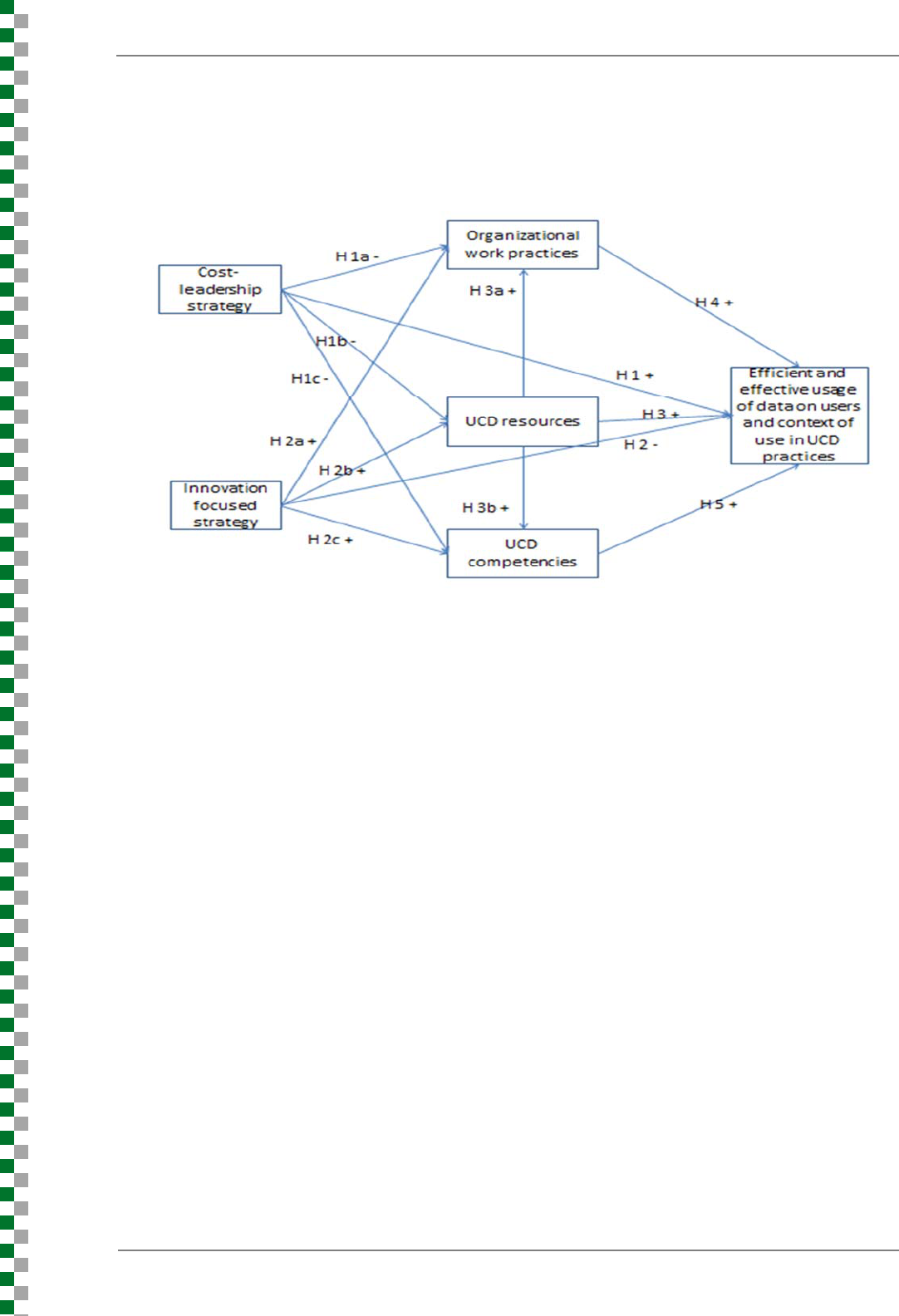
Communications of the Association for Information Systems 321
Volume 40 Paper 14
2.3 Research Model
Based on the hypotheses we formulate above, Figure 1 presents our research model. In Section 3, we
explain how we collected the data and tested the model.
Figure 1. The research model
3 Methodology
To test our research model, we conducted a survey and analyzed the data we obtained with the PLS-SEM
technique. Researchers commonly use surveys to test hypotheses (Johnson & Turner, 2003; Lazar, Feng,
& Hochheiser, 2010). SEM is especially useful to test models that include mediation and makes it possible
to test the structural and measurement parts of a model at the same time.
3.1 Sample
We collected data via an online questionnaire that we sent to UCD practitioners involved in designing and
developing mobile applications. We emphasized this focus in both the questionnaire invitation and in the
introduction to the questionnaire. Acknowledging the fact that the UCD practice occurs in a complex
organizational environment that involves multiple stakeholders with distinct backgrounds and worldviews
(Suchman, 2002), different expectations (Krippendorf, 2006), and different criteria for determining a
project’s success (Baxter & Sommerville, 2011), we were interested in responses from practitioners in the
following three project roles: 1) UCD specialists (e.g., UX designer, interaction designer, usability
engineer), who implement the UCD practice and make use of its gathered data; 2) project managers, who
are familiar with their organizations’ organizational strategy and have decision making power in allocating
UCD competence and UCD resources; and 3) software developers, who also use data gathered from the
UCD practice. Practitioners in these project roles are both on the management level (i.e., project
managers) and on operational level (i.e., UCD specialists and software developers). In small firms in
particular, operational-level practitioners are commonly also involved in making strategies and decisions.
As such, such individuals know about both UCD practice and organizational strategy. . In particular, those
involved in the UCD practice have numerous job titles and educational backgrounds. Thus, we collected
data based on non-probabilistic sampling—a valid and common practice (Lazar et al. 2010) in cases
where one cannot apply a strict random sampling.
We contacted potential respondents through multiple channels, such as emails and the mailing lists
professional communities (e.g. HCI, UXPA, IXDA). In addition, we posted a link to the questionnaire on
relevant and active discussion forums (e.g. LinkedIn groups, Google+ communities) and on Twitter using

322 The Role of Organizational Strategy in the User-centered Design of Mobile Applications
Volume 40 Paper 14
relevant hash (#) tags. The survey was available online for four continuous weeks during February and
March in 2013.
We received a total of 100 responses from 20 countries: most individuals came from Finland (46%), the
US (12%), Sweden (9%), Netherlands (5%), and Israel (5%). Most of the respondents worked as UX
designers (33%), project managers (19%), software developers (8%), and project owners (7%).
The respondents worked primarily in companies (as opposed to freelancers) of different sizes. About 28
percent of the companies had 10 or fewer employees, 24 percent had 11-50 employees, 7 percent had
51-100 employees, 18 percent had 101-1000 employees, and the remaining 23 percent had more than
1000 employees. The median company size was 46 employees and the mode was 5. In terms of business
sectors, software (36%) and usability/UX consulting (18%) were the two largest categories; other sectors
including education, telecommunications, design, technology research and gaming represented a single-
digit percentage. At face value, the respondents worked in environments in which one would expect them
to—small, medium-sized, and large enterprises mainly in the software business and usability/UX
consulting. Although we cannot claim representativeness, we assume that the respondents represent a
common sample for our population.
While other studies (e.g., Clemmensen, Hertzum, Yang, & Chen, 2013) have found differences between
usability specialists and software developers, we extensively tested difference between the three groups
(UCD specialists, project managers, and software developers) for the core constructs based on ANOVA
but could not find any significant differences. Therefore, we concluded that the sample was homogeneous
enough to conduct SEM.
3.2 Measures
We based the measures for the core concepts in this study on established items from existing studies
(see Table 1). Furthermore, we pilot tested the questionnaire following Dillman’s (2006) three-stage
recommendations. We grouped questions into four sections: 1) questions that address the use context in
mobile application design—the perceived importance of contextual aspects and the use, purpose, and
perceived effectiveness of methods to gather data on users and their use contexts; 2) questions related to
how methods and collected data in UCD practice are utilized and informing the design artefact; 3)
questions about organizational setting: business sector, size, organizational practices, strategy, and
competitive environment, and 4) questions about the participants themselves (i.e., demographic
questions): their geographical location, experience with UCD practice, and main role in mobile application
projects.
Confirmatory factor analysis using Warp PLS showed acceptable levels of convergent and discriminant
validity. Convergent validity was acceptable for all constructs. Factor loadings exceeded .70, and all
average variance extracted (AVE) values were above .60 (Fornell & Lacker, 1981). Construct reliability
was acceptable because composite reliability was above .80, which exceeds the .60 benchmark. Multi-
collinearity was not significant since the average of full collinearity VIF equaled 1.099, and full collinearity
VIF equaled 1.445—far below the 3.3 benchmark.
Discriminant validity was acceptable because the average squared correlation of any pair of constructs did
not exceed the average of the respective average variance extracted (see Table 2).
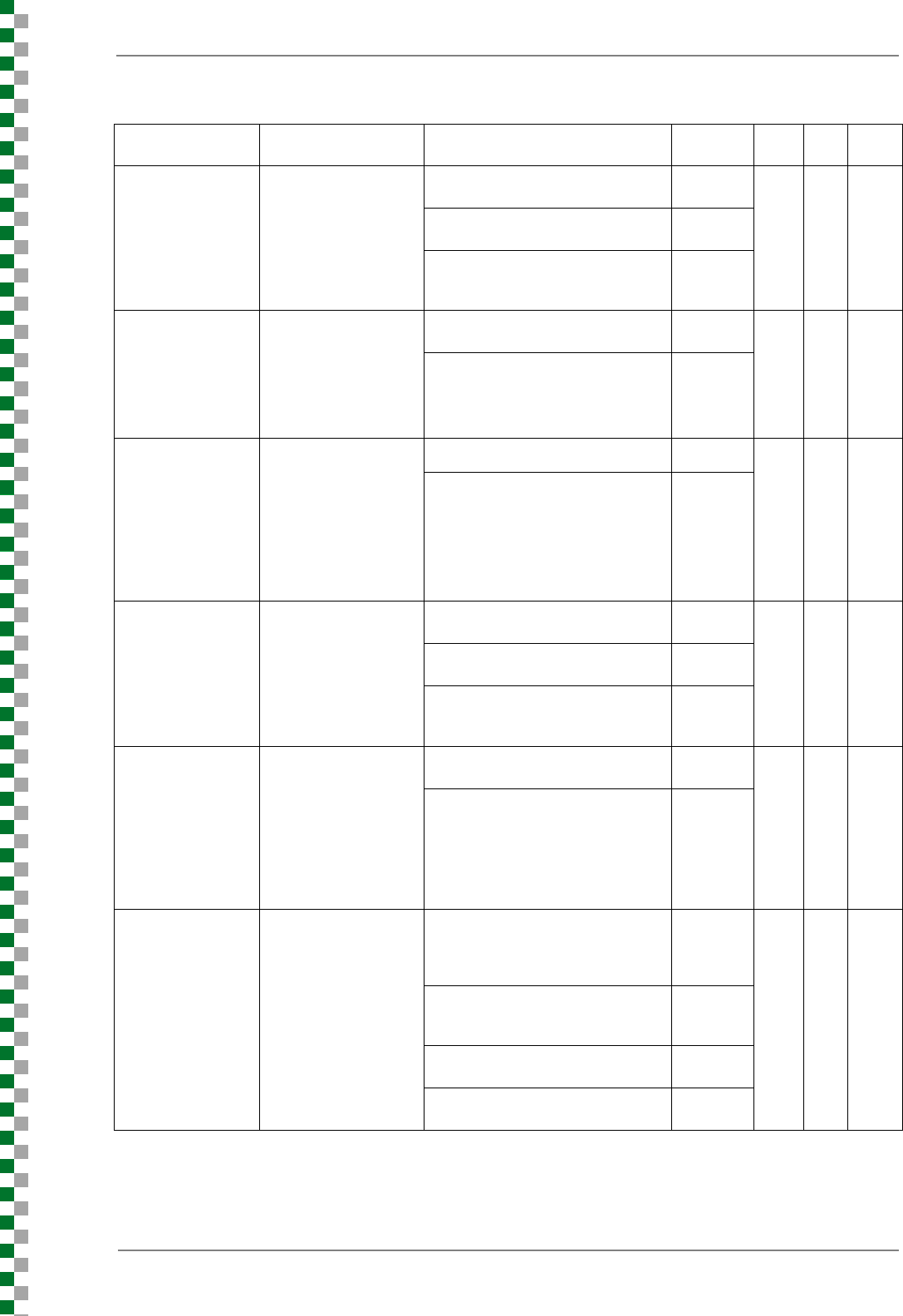
Communications of the Association for Information Systems 323
Volume 40 Paper 14
Table 1. Confirmatory Factor Analysis
Construct Question heading Item
Std. factor
loading
AVE VIF
Comp.
rel.
Cost-leadership
strategy
(Treacy &
Wiersema, 1993)
Reflective scale
STRAT_COST
How important are the
following aspects to
your company’s
strategy?
(5-point: 1: not at all
important, 5: extremely
important)
Being cost leader with our
products/services
.83
.61 1.113 .82
Optimizing our operations to
minimize development costs
.71
Emphasizing economies of scale
and scope with our
products/services
.79
Innovation-focused
strategy
(Rönkkö & Peltonen,
2012)
Reflective scale
STRAT_INN
How important are the
following aspects to
your company’s
strategy?
(5-point: 1: not at all
important, 5: extremely
important)
Producing a continuous stream of
innovative products/services
.89
.78 1.544 .88
Being unique in our industry (e.g.,
with regard to product/service)
.89
UCD resources
(Monahan et al.,
2008)
DP_RESOU
How do the following
factors influence the
expected result from
the data gathering
methods you have
used?
(7-point: 1: not at all
influential, 7: extremely
influential)
Project budget .89
.79 1.198 .88
Project time constraints .89
Organizational work
practices
(Seyal, Awais,
Shamail, & Abbas,
2004)
Reflective scale
ORG_PRACT
How well do the
following statements
describe the work
practices at your
company?
(7-point: 1: strongly
disagree, 7: strongly
agree)
Employees are encouraged to
contribute to the team
.88
.75 1.895 .90
Employees are given regular
feedback on their performance
.81
Employees are encouraged to bring
new ideas to work practice
.91
UCD competence
(Monahan et al.,
2008)
DP_COMPET
How do the following
factors influence the
expected result from
the data gathering
methods you have
used?
(5-point: 1: not at all
influential, 2: extremely
influential)
Experience with methods from
previous projects
.84
.70 1.238 .83
Competence of available staff .84
Efficient and
effective use of data
on users and
context of use
Formative scale
EVAL_DATA
To what level do you
agree or disagree with
the following
statements. The data
we gather …
(7-point: 1: strongly
disagree, 7: strongly
agree)
Is efficiently used in my company
(efficiency = achieving the
maximum productivity with minimum
wasted effort)
.77
.61 1.684 .86
Is effectively used in my company
(effectiveness = being successful in
producing the desired result)
.86
Significantly improve our
understanding of contexts of use
.79
Is crucial to the success of our
mobile app
.70
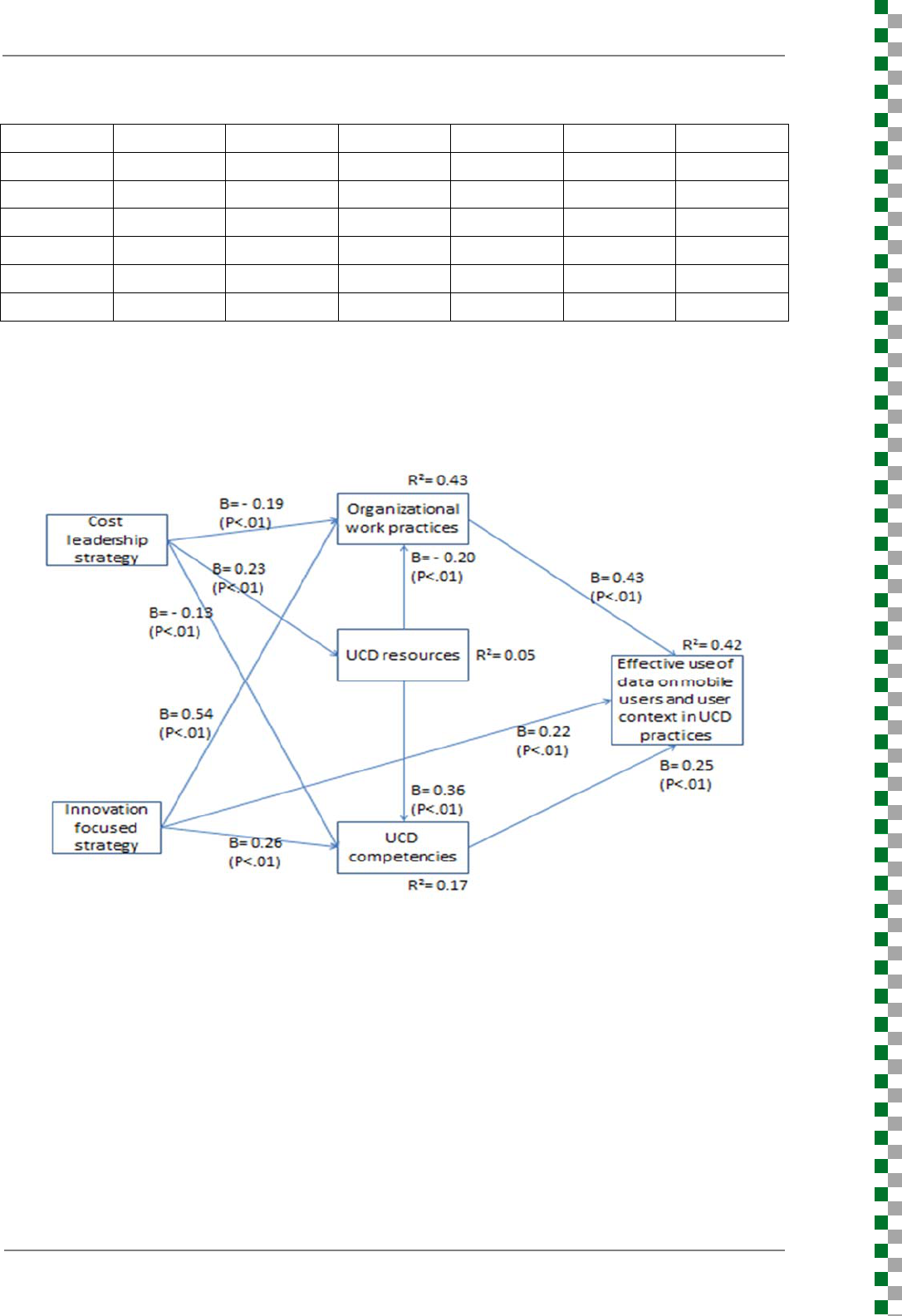
324 The Role of Organizational Strategy in the User-centered Design of Mobile Applications
Volume 40 Paper 14
Table 2. Interconstruct Correlations and Square Root of AVE
STRAT_INN STRAT_COST ORG_PRACT DP_COMPET DP_RESOU EVAL_DATA
STRAT_INN
(0.886)
STRAT_COST
-0.023 (0.780)
ORG_PRACT
0.549 -0.239 (0.869)
DP_COMPET
0.125 0.042 0.006 (0.839)
DP_RESOU
-0.023 0.190 -0.134 0.337 (0.890)
EVAL_DATA
0.455 -0.135 0.546 0.281 0.100 (0.782)
4 Results
We trimmed the original research model in Figure 1 by omitting insignificant paths. The final structural
regression model (see Figure 2) presented a good fit (Tenenhaus GOF equals .432). Overall, the
explained variance of the evaluation of data use was moderate (R
2
= .42).
Figure 2. Structural Regression Model
Table 3 overviews the hypotheses: we found support for seven and did not find support for four. Further,
two of the supported hypotheses showed a direction opposite to what we hypothesized. We will discuss
the results in more detail in Section 5.
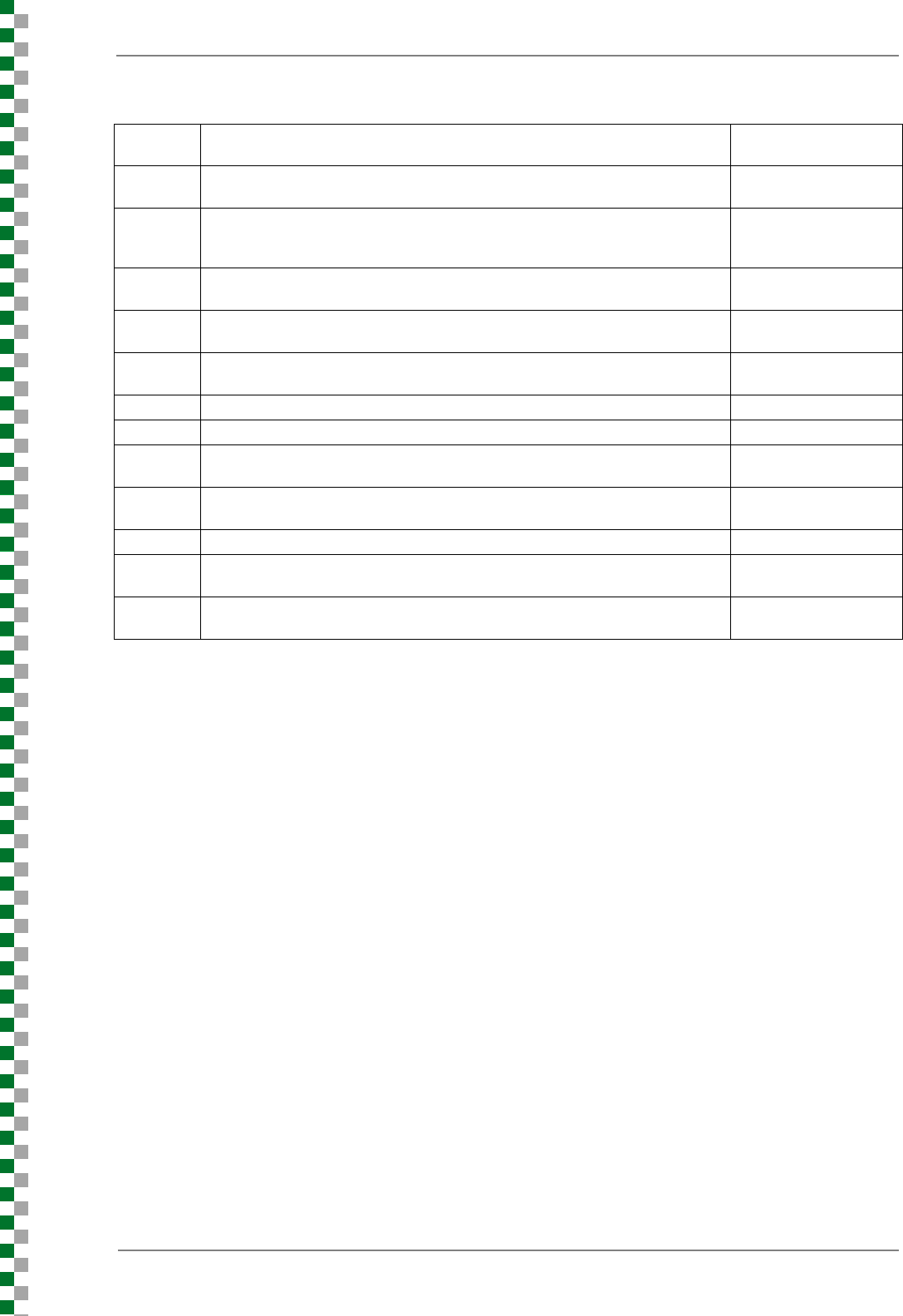
Communications of the Association for Information Systems 325
Volume 40 Paper 14
Table 3. Overview of Accepted and Rejected Hypotheses
H1
Cost-leadership strategy increases efficiency and effectiveness of using data
on users and context of use.
Not supported
H1a
Cost-leadership strategy decreases organizational work practices committed to
UCD.
Supported
H1b
Cost-leadership strategy decreases resources committed to UCD. Supported in opposite
direction but weak
relation
H1c
Cost-leadership strategy decreases UCD competence Supported but weak
relation
H2
Innovation-focused strategy decreases efficiency and effectiveness of using
data on users and context of use.
Not supported
H2a
Innovation-focused strategy increases organizational work practices committed
to UCD
Supported
H2b Innovation-focused strategy increases resources committed to UCD Not supported
H2c Innovation-focused strategy increases UCD competence Supported
H3
The amount of resources committed to UCD increases efficiency and
effectiveness of using data on users and context of use.
Not supported
H3a
The amount of resources committed to UCD increases organizational work
practices committed to UCD.
Supported in opposite
direction
H3b The amount of resources committed to UCD increases UCD competence. Supported
H4
The amount of organizational work practices committed to UCD increases
efficiency and effectiveness of using data on users and context of use..
Supported
H5
UCD competence increases efficiency and effectiveness of using data on
users and their use context
Supported
5 Discussion
In this section, we discuss the results and the hypotheses in greater detail. First of all, it is interesting to
see that the model itself had a high predictive value and explained the efficiency and effectiveness of the
UCD practice related to data on users and use context to a significant extent. To our knowledge, this
model represents one of the first attempts to connect the broader stream of research on strategy and
innovation to UCD practice. Further, we introduce an explanatory rather than a qualitative or descriptive
model. However, the model remains limited in the sense that it is focused on the UCD practice, while, in
the end, the actual use of mobile applications is the decisive factor. In other words, we only tested the
UCD practice’s of efficient and effective use of data in UCD practices informing the design of mobile
applications, not their use. As such, we can claim only to contribute to how the UCD practice leads to
better informed designs, while taking conditions like strategy orientation and how design teams operate
within constraints of an organizational setting into account.
We found no main effect between a cost-leadership strategy and the efficiency and effectiveness data on
users and use context is used in the UCD practice of mobile applications (H1). Further, the availability of
UCD resources, organizational work practices, and UCD competence (H1a-c) mediated the effect.
Interestingly, only the relation with UCD resources was positive, contrary to our expectations (H1b), while
the other two relations were negative (H1a and H1c). This finding implies that cost-focused companies are
prepared to invest in but do not positively contribute to favorable organizational work practices and UCD
competence, which confirms traditional insights from the strategic management literature regarding cost-
focused strategies that have optimization at their core.
In contrast to cost-leadership strategy, we found a relation between an innovation-focus strategy and
efficiency and effectiveness in which data on users and use context are used in the UCD practice of
mobile applications (H2). Strikingly, we found no relation between an innovation-focused strategy and the
availability of UCD resources (H2b). Apparently, the respondents’ organizations thought it more important
to develop positive organizational work practices and UCD competence than providing their UCD
practitioners with the time and money for actual UCD activities (H2a and H2c). This finding confirms
insights from innovation management. Researchers have previously emphasized that organizations need

326 The Role of Organizational Strategy in the User-centered Design of Mobile Applications
Volume 40 Paper 14
to facilitate internal communication to support UCD practices (Rosenbaum et al. 2000; Venturi et al,
2006).
Although earlier studies emphasize the significant influence of budget and time-related constraints on the
UCD practice (e.g., Monahan et al., 2008; Rosenbaum et al., 2000; Vredenburg et al., 2002), this does not
affect the UCD practice with regard to the efficient and effective use of data on users and context
(hypothesis 3). Organizations rely mainly on practitioners’ UCD competence and organizational work
practices in designing mobile applications and don’t provide resources for supporting UCD practices.
However, we found a negative relation between UCD resources (time and budget) and organizational
work practices, which implies that, due to temporal and financial constraints, UCD practitioners rely on
open communication and collaboration (H3a but with a reversed direction). The impact of UCD resources
on UCD competence showed a moderate positive contribution (H3b).
We also found support for the hypothesis that organizational work practices (i.e., established work
practices that contribute to creativity, open collaboration, and the sharing of ideas in the work
environment) have a positive relationship with efficient and effective use of data on users and context of
use in design practices. Creation and sharing of ideas and knowledge within the organization, in order to
streamline the UCD practice proves to be highly relevant (hypothesis 4). This relation was the strongest.
The finding suggests that design teams that are open and sharing will more likely use all kinds of data
sources that are relevant to them in a more efficient and effective way in their design practices.
Our results show that UCD practitioners’ UCD competence essentially determines how effectively they
use data on users and their use contexts (H5) at least in the context of mobile application design. The
hypothesis supports the idea that competent practitioners are more likely to efficiently and effectively use
resources by finding alternative solutions to a design problems and capitalizing on earlier experiences.
However, we did not study practitioners’ actual qualifications and experience in designing and developing
mobile applications. As such, future research could more extensively operationalize these two concepts in
relation to practitioners’ UCD competence to better explain their role in the UCD practice.
Our study contributes to strategic management literature by showing how different high-level strategic
orientations affect the UCD practice on the operational level. Our tested hypotheses provide a basis for
theorizing how strategic decisions in organizations affect UCD practitioners’ day-to-day work practices.
Moreover, we contribute to IS literature by showing how both strategic orientation as and the availability of
resources and competence in organizations affects the UCD practice. Given the complex, multifaceted
nature of organizations and their operation, our study also contributes an interdisciplinary approach by
combining theories from strategic management, IS management, and the HCI disciplines.
On a practical level, our findings imply that practitioners, especially those in managerial positions, in
organizations that design and develop mobile applications should take steps to ensure that they have
practitioners with relevant skills and experience to produce better user-informed designs in a timely
manner. As we explain above, understanding users and their use contexts during the UCD practice in the
mobile apps era requires new competence. In the highly competitive mobile business market, obtaining
such competence may be part of the rare capabilities that give an organization a competitive advantage.
6 Conclusion, Limitations, and Future Research
In this paper, we show links between the organizational strategy and the way practitioners, particularly
UCD specialists such as UX and interaction designers, deal with data about users and their use contexts
when designing mobile applications. An innovation-focused strategy has a direct impact on the way
designers work (i.e., their work practices and individual UCD competence) and also how efficiently and
effectively they use data sources on users and their use contexts. However, when dealing with users’
dynamic contexts and needs, practitioners rely on their competence and experience from earlier projects
due mainly to project resource limitations.
This study is the first that relates organizational context and innovation strategies with UCD practices,
particularly with regard to the way in which practitioners use data on users and their use contexts. To our
knowledge, this study is also the first that tries to develop more explanatory models with regard to the
UCD practice in the HCI discipline. The connection between an outside-in strategy focus with an inside-
out perspective that focuses on UCD resources, UCD competence, and organizational work practices
proves to be fruitful. Our results show that the latter plays a clear mediating role between strategy
orientation and the efficient and effective use of data on users and context of use in UCD practices [

Communications of the Association for Information Systems 327
Volume 40 Paper 14
We started from strategic and innovation management literature, as well as from resource-based view to
address an important under-researched interdisciplinary domain (i.e., the connection between strategy
thinking and design practices, more specifically on the efficient and effective use of data on users and
context of use in designing mobile applications). Developing explanatory models, instead of descriptive
and more qualitative models, that take a strategy perspective as a starting point and pay attention to
moderating resources and capabilities in explaining a specific UCD practice may extend our knowledge on
the UCD practice and more generally on design practice.
With regard to further research, we need more research that focuses on what organizations expect from
the UCD practice, specifically if budgets and time, also for developing competencies, for UCD practices
are constrained. More research is also needed on the way information on users and their context exactly
plays a role in the UCD practice. Furthermore, organizations may not be able to efficiently use data due to
its quality, a lack of precision of the data, or even information overload. We see two distinct research
approaches. On the one hand, we need more research that adopts large-scale surveys to develop more
sound research models and a more detailed and precise operationalization of core concepts relating
organizational related characteristics, such as strategic orientation, resource management, and work and
(user-centric) design practices, as well as the relation between UCD practices and the use of data
sources. These research models should consider the actual use of mobile, or any other type of,
application. On the other hand, we need more detailed qualitative research into everyday design practice.
More extensive qualitative research and observational studies will provide deeper insights that quantitative
research can test further.
On a practical level, this paper highlights the importance of having an open innovative strategy (i.e., one
that encourages individuals in an organization to communicate and share ideas) to design better products.
Moreover, practitioners with relevant skills and experience in terms of understanding user needs and their
use contexts can be critical assets that give organizations a competitive advantage.
This study’s main limitations concern the data we collected and the model we tested. First, we collected
data based on a convenience sample (an issue common in researching those involved in the UCD
practice); we depended highly on practitioners’ willingness to participate. We put much effort in collecting
data by addressing respondents in several ways. To further research in this domain, one needs to involve
more UX and interaction designers, project managers, and software developers to better represent those
who design and develop usable and useful interactive (mobile) systems and garner richer insights that
may help improve their work and (user-centric) design practices.
As for our model’s limitations, we did not consider the socio-spatial context in which users used the
designed application (e.g., whether users used it for specific work-related activities in relatively stable and
predictable context or for non-work activities in more diverse and dynamic context). Including this factor in
future would allow one to more thoroughly analyze on the tendency of UCD practitioners to collect user
and context data and to analyze the interactions between organizational factors and use-context factors
and their influence on UCD practitioners. Moreover, future research needs to develop and test alternative
models. With this paper, we connect strategic and innovation management research to research into UCD
practice and, in doing so, open new interdisciplinary research venues.
Acknowledgments
We greatly thank the reviewers and the senior editor for their extremely useful and constructive comments
on earlier drafts of this paper. We also thank Balsamiq Studios and Rally Software for giving away a few
licenses of their software for the study. The research work for this study was funded by the Turku Centre
for Computer Science and by a grant from the Foundation for Economic Education in Finland
(Liikesivistysrahasto).

328 The Role of Organizational Strategy in the User-centered Design of Mobile Applications
Volume 40 Paper 14
References
Barney, J. (1991). Firm resources and sustained competitive advantage. Journal of Management, 17(1),
99-120.
Baxter, G., & Sommerville, I. (2011). Socio-technical systems: From design methods to systems
engineering. Interacting with Computers, 23(1), 4-17.
Bergvall-Kåreborn, B., & Howcroft, D. (2011). Mobile applications development on Apple and Google
platforms. Communications of the Association for Information Systems, 29, 565–580.
Boland, R. J., Jr. (1978). The process and product of system design. Management Science, 24(9), 887-
898.
Bygstad, B., Ghinea, G., & Brevik, E. (2008). Software development methods and usability: Perspectives
from a survey in the software industry in Norway. Interacting with Computers, 20(3), 375-385.
Christensen, C. M. (1997). The innovator’s dilemma: When new technologies cause great firms to fail.
Harvard Business Press.
Clemmensen, T., Hertzum, M., Yang, J., & Chen, Y. (2013). Do usability professionals think about user
experience in the same way as users and developers do? In P. Kotzé, G. Marsden, G. Lindgaard, J.
Wesson, & M. Winckler (Eds.), Human-computer interaction—INTERACT 2013 (pp. 461-478).
Berlin: Springer.
Cross, N. (2001). Designerly ways of knowing: Design discipline versus design science. Design Issues,
17(3), 49-55.
De Wit, B., & Meyer, R. (2010). Strategy synthesis: Resolving strategy paradoxes to create competitive
advantage (3
rd
ed.). Australia: Cengage Learning.
Dillman, D. A. (2006). Mail and Internet surveys: The tailored design method—2007 update with new
Internet, visual, and mixed-mode guide (2nd ed.). New York: Wiley.
Dix, A., Rodden, T., Davies, N., Trevor, J., Friday, A., & Palfreyman, K. (2000). Exploiting space and
location as a design framework for interactive mobile systems. ACM Transactions on Computer-
Human Interaction, 7(3), 285-321.
Eshet, E. & H. Bouwman (2015). Addressing the context of use in mobile computing: A survey on the
state of the practice. Interacting with Computers. Volume 27 (4): 392-412. doi: 10.1093/iwc/iwu002
Fornell, C., & Larcker, D. F. (1981). Evaluating structural equation models with unobservable variables
and measurement error. Journal of Marketing Research, 18(1), 39-50.
Gould, J. D., & Lewis, C. (1985). Designing for usability: Key principles and what designers think.
Commununications of the ACM, 28(3), 300-311.
Gulliksen, J., Boivie, I., & Göransson, B. (2006). Usability professionals—current practices and future
development. Interacting with Computers, 18(4), 568–600.
Gulliksen, J., Boivie, I., Persson, J., Hektor, A., & Herulf, L. (2004). Making a difference—a survey of the
usability profession in Sweden. In Proceedings of the 3rd Nordic Conference on Human-Computer
Interaction (pp. 207-215). ACM Press.
Hassenzahl, M., & Tractinsky, N. (2006). User experience—a research agenda. Behaviour & Information
Technology, 25(2), 91-97.
Henfridsson, O., & Lindgren, R. (2005). Multi-contextuality in ubiquitous computing: Investigating the car
case through action research. Information and Organization, 15(2), 95-124.
Hertzum, M., & Jacobsen, N. E. (2001). The evaluator effect: A chilling fact about usability evaluation
methods. International Journal of Human-Computer Interaction, 13(4), 421–443.
Hevner, A. R., March, S. T., Park, J., & Ram, S. (2004). Design science in information systems research.
MIS Quarterly, 28(1), 75-105.
Iivari, N. (2006). “Representing the User” in software development—a cultural analysis of usability work in
the product development context. Interacting with Computers, 18(4), 635-664.
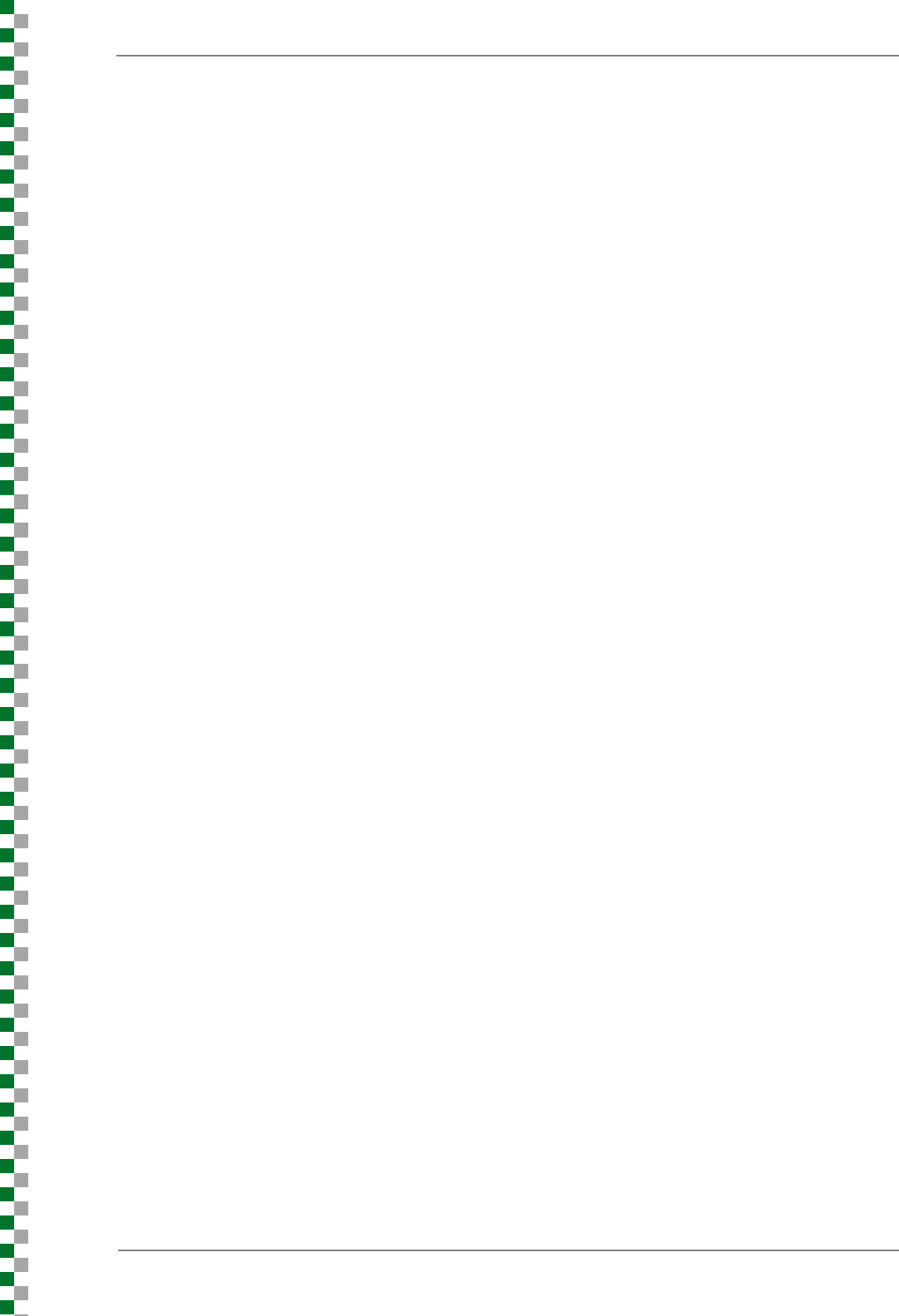
Communications of the Association for Information Systems 329
Volume 40 Paper 14
ISO. (2010). ISO 9241-210:2010 Ergonomics of human-system interaction-Part 210: Human-centred
design for interactive systems. Geneva: International Organization for Standardization.
Johnson, B., & Turner, L. A. (2003). Data collection strategies in mixed methods research. In A.
Tashakkori & C. Teddlie (Eds.), Handbook of mixed methods in social & behavioral research (pp.
297-319).
Johnson, P. (1998). Usability and mobility: Interactions on the move. In Proceedings of the 1st Workshop
on Human-Computer Interaction with Mobile Devices.
Krippendorff, K. (2006). The semantic turn: A new foundation for design. Boca Raton: Taylor and Francis.
Lazar, J., Feng, J. H., & Hochheiser, H. (2010). Research methods in human-computer interaction. New
York, NY: John Wiley & Sons.
Mata, F. J., Fuerst, W. L., & Barney, J. B. (1995). Information technology and sustained competitive
advantage: A resource-based analysis. MIS Quarterly, 19(4), 487-505.
Mayhew, D. J. (1999). The usability engineering lifecycle: A practitioner’s handbook for user interface
design. San Francisco, CA: Morgan Kaufmann.
Mintzberg, H. (1987). The strategy concept I: Five Ps for strategy. California Management Review, 30(1),
11-24.
Mintzberg, H., Ahlstrand, B., & Lampel, J. (2009). Strategy safari: The complete guide through the wilds of
strategic management. London: Prentice Hall.
Monahan, K., Lahteenmaki, M., McDonald, S., & Cockton, G. (2008). An investigation into the use of field
methods in the design and evaluation of interactive systems. In Proceedings of the 22nd British HCI
Group Annual Conference on People and Computers: Culture, Creativity, Interaction (vol. 1, pp. 99-
108). Swinton, UK: British Computer Society.
Peffers, K., Tuunanen, T., Rothenberger, M. A., & Chatterjee, S. (2007). A design science research
methodology for information systems research. Journal of Management Information Systems, 24(3),
45-77.
Porter, M. E. (1985). Competitive advantage: Creating and sustaining superior performance. New York,
NY: Simon and Schuster.
Ritter, T., & Gemünden, H. G. (2004). The impact of a company’s business strategy on its technological
competence, network competence and innovation success. Journal of Business Research, 57(5),
548–556.
Robey, D., & Markus, M. L. (1984). Rituals in information system design. MIS Quarterly, 8(1), 5-15.
Rönkkö, M., & Peltonen, J. (2012). Software industry survey. Software Business Lab. Retrieved from
http://www.softwareindustrysurvey.org/
Rosenbaum, S., Rohn, J. A., & Humburg, J. (2000). A toolkit for strategic usability. In Proceedings of the
SIGCHI conference on Human Factors in Computing Systems (pp. 337-344). ACM Press.
Schaffer, E. (2004). Institutionalization of usability: A step-by-step guide. Boston, MA: Addison-Wesley.
Schmidt, R., Lyytinen, K., & Keil, P. C. M. (2001). Identifying software project risks: An international Delphi
study. Journal of Management Information Systems,
17(4), 5-36.
Seffah, A., Desmarais, M. C., & Metzker, E. (2005). HCI, usability and software engineering integration:
Present and future. In A. Seffah, J. Gulliksen, & M. C. Desmarais (Eds.), Human-centered software
engineering—integrating usability in the software development lifecycle (pp. 37-57). Berlin:
Springer.
Sein, M., Henfridsson, O., Purao, S., Rossi, M., & Lindgren, R. (2011). Action design research. MIS
Quarterly, 35(1), 37-56.
Seyal, A. H., Awais, M. M., Shamail, S., & Abbas, A. (2004). Determinants of electronic commerce in
Pakistan: Preliminary evidence from small and medium enterprises. Electronic Markets, 14(4), 372-
387.

330 The Role of Organizational Strategy in the User-centered Design of Mobile Applications
Volume 40 Paper 14
Sharp, H., Rogers, Y., & Preece, J. (2007). Interaction design: Beyond human-computer interaction (2nd
edition). New York: Wiley.
Suchman, L. (2002). Located accountabilities in technology production. Scandinavian Journal of
Information Systems, 14(2), 91-105.
Suwa, M., & Tversky, B. (2001). Constructive perception in design. In J. Gero & M. L. Maher (Eds.),
Computational and cognitive models of creative design V (pp. 227-239). University of Sydney,
Australia: Key Centre of Design Computing and Cognition.
Tidd, J., Bessant, J., & Pavitt, K. (2005). Managing innovation: Integrating technological, market and
organizational change. New York, NY: John Wiley & Sons.
Treacy, M., & Wiersema, F. (1993). Customer intimacy and other value disciplines. Harvard Business
Review, 71(1), 84-93.
Venturi, G., Troost, J., & Jokela, T. (2006). People, Organizations, and Processes: An Inquiry into the
Adoption of User-Centered Design in Industry. International Journal of Human-Computer
Interaction, 21(2), 219-238.
Vredenburg, K., Mao, J.-Y., Smith, P. W., & Carey, T. (2002). A survey of user-centered design practice.
In Proceedings of the SIGCHI Conference on Human Factors in Computing Systems (pp. 471-478).
New York, NY: ACM.
Wade, M., & Hulland, J. (2004). The resource-based view and information systems research: Review,
extension, and suggestions for future research. MIS Quarterly, 28(1), 107-142.
Wernerfelt, B. (1984). A resource-based view of the firm. Strategic Management Journal, 5(2), 171-180.
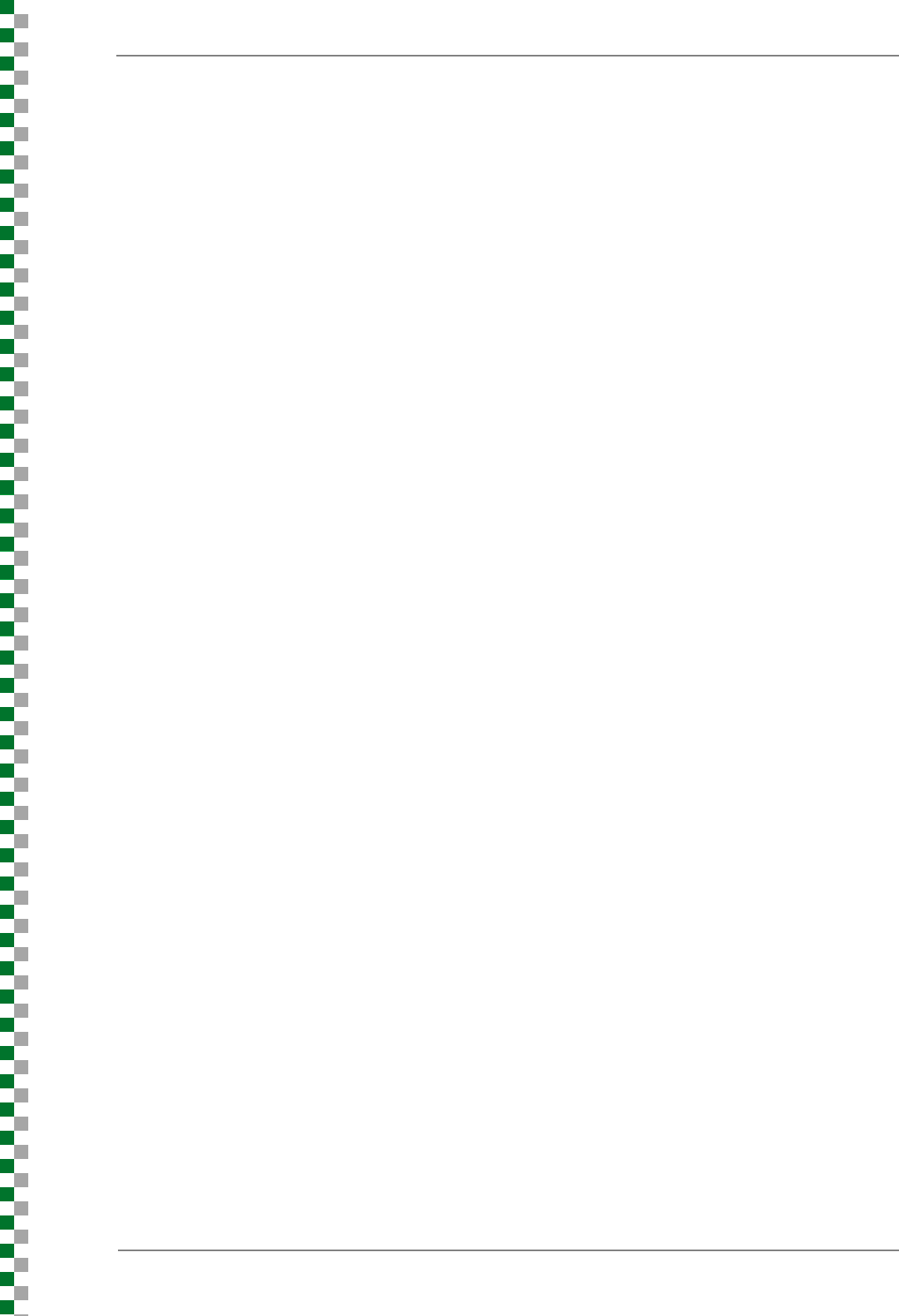
Communications of the Association for Information Systems 331
Volume 40 Paper 14
About the Authors
Eyal Eshet is a post-doctoral researcher at IAMSR, Åbo Akademi University, Turku, Finland. He has
several years of work experience in software programming and design in industrial context, which shaped
his scope of research interest on the design practice.
Mark de Reuver is Assistant Professor at ICT Section, Faculty of Technology Policy and Management
Delft University of Technology, The Netherlands. He received his PhD degree in 2009 from Delft
University of Technology. Mark has published more than 65 journal and conference articles in the area of
mobile service innovation, platform governance, mobile service business model and smart living.
Harry Bouwman is a Finnish Distinguished Professor at IAMSR, Åbo Akademi University, Turku, Finland,
and an associate professor at ICT Section, Faculty of Technology, Policy and Management, Delft
University of Technology, The Netherlands. His research is focused on ICT and organizations; ICT
Management; strategy, business models, and enterprise architecture; and mobile cloud computing and
mobile services.
Copyright © 2017 by the Association for Information Systems. Permission to make digital or hard copies of
all or part of this work for personal or classroom use is granted without fee provided that copies are not
made or distributed for profit or commercial advantage and that copies bear this notice and full citation on
the first page. Copyright for components of this work owned by others than the Association for Information
Systems must be honored. Abstracting with credit is permitted. To copy otherwise, to republish, to post on
servers, or to redistribute to lists requires prior specific permission and/or fee. Request permission to
publish from: AIS Administrative Office, P.O. Box 2712 Atlanta, GA, 30301-2712 Attn: Reprints or via e-
mail from [email protected].
